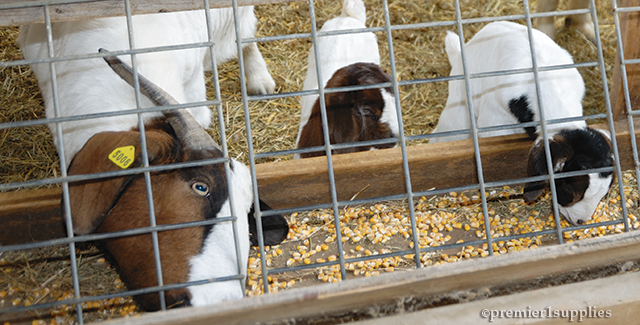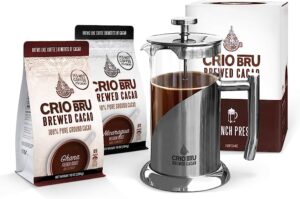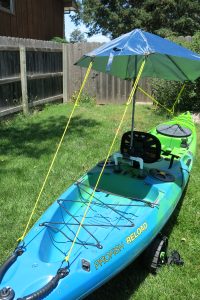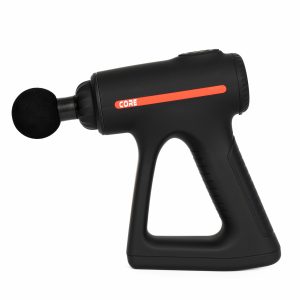Contents
- Why Efficient Feeding Is Crucial For Sheep And Goats
- Different Types Of Sheep And Goat Feeders
- Factors To Consider When Choosing Sheep And Goat Feeders
- Best Practices For Using Sheep And Goat Feeders
- Tips For Diy Sheep And Goat Feeder Construction
- Frequently Asked Questions For Sheep And Goat Feeders
- Conclusion
Sheep and goat feeders are essential for efficient and convenient feeding of these animals. These feeders are designed to provide a steady supply of food while preventing waste and minimizing spillage.
They come in various types and sizes to accommodate different herd sizes and feeding needs. Feeders with adjustable heights and barriers can help prevent larger animals from pushing smaller ones aside. Some feeders also have dividers that separate feed compartments to prevent overeating and ensure each animal gets its fair share.
Properly designed and managed feeders can contribute to the overall health and productivity of sheep and goats, making them an important investment for livestock farmers.
Why Efficient Feeding Is Crucial For Sheep And Goats
Efficient feeding plays a crucial role in ensuring the health and well-being of sheep and goats. Proper nutrition is essential for their growth, reproduction, and overall productivity. Choosing the right sheep and goat feeders can help facilitate easy access to feed and minimize wastage, resulting in more efficient feeding practices.
Sheep and goats are essential livestock animals widely raised for their meat, milk, and fiber. Proper feeding plays a vital role in ensuring their overall health, productivity, and profitability. In this section, let’s explore the economic importance of proper feeding for sheep and goats, as well as the role of feeders in optimizing feeding efficiency.
Economic Importance Of Proper Feeding:
- Improved growth and weight gain: Providing a well-balanced and nutrient-rich diet to sheep and goats promotes healthy growth and ensures optimal weight gain. This directly translates into higher profitability for farmers and producers.
- Enhanced reproductive performance: Proper nutrition is crucial for reproductive success in sheep and goats. A balanced diet with adequate levels of energy, protein, vitamins, and minerals supports better fertility, increased conception rates, and reduced instances of reproductive disorders, ultimately leading to higher productivity.
- Improved milk production: For dairy goats and some breeds of sheep, quality milk production is of utmost importance. By ensuring a suitable feeding regime with the right blend of nutrients, milk production can be maximized, meeting market demands, and increasing dairy profits.
- High-quality meat and fiber production: Proper feeding guarantees the development of well-muscled, healthy animals with desirable meat qualities. Additionally, when it comes to fiber-producing breeds of sheep such as Merino, a good diet promotes the growth of a dense, fine fleece with superior characteristics.
Role Of Feeders In Optimizing Feeding Efficiency:
- Reduced feed wastage: Feeders provide a designated space for sheep and goats to access their food, minimizing feed wastage caused by trampling, soiling, or spoilage. This not only saves costs but also ensures that animals receive the appropriate amount of nutrition.
- Controlled intake and portioning: Feeders allow for better portion control, ensuring that sheep and goats consume the right amount of feed for their size and nutritional requirements. This prevents overeating or underfeeding, promoting optimal growth and health.
- Decreased risk of contamination: By keeping the feed elevated and separated from the ground, feeders reduce the likelihood of it coming into contact with dirt, feces, or parasites. This helps maintain feed quality and reduces the risk of health issues in animals.
- Enhanced feeding flexibility: Feeders provide a convenient and organized way to offer different types of feeds to sheep and goats. This allows farmers to easily adjust diets based on specific nutritional needs or production stages, ensuring animals receive the most suitable feed for their requirements.
- Prevention of feed competition and stress: Having properly designed and strategically placed feeders reduces competition among animals during feeding. This minimizes stress levels and potential injuries, creating a calm and harmonious feeding environment.
Proper feeding is indeed crucial for the well-being, productivity, and profitability of sheep and goats. By implementing efficient feeding practices and utilizing suitable feeders, farmers can optimize the utilization of resources and promote the overall success of their livestock operations.
Different Types Of Sheep And Goat Feeders
Sheep and goat feeders come in various types to suit the needs of different farmers. These feeders are designed to provide easy access to food for the animals, ensuring efficient feeding and minimizing waste.
Sheep and goats have unique feeding requirements, and having the right type of feeder is crucial for their health and productivity. There are various options available for feeding these animals, including self-feeders, hay feeders, trough feeders, and creep feeders. Let’s explore each type and learn more about their features, benefits, and suitable uses.
Self-Feeders
Self-feeders are designed to provide unlimited access to feed for sheep and goats throughout the day. These feeders have rotating or adjustable openings that allow the animals to consume the feed whenever they need it. Here are some features and benefits of self-feeders:
- Easy to use: Sheep and goats can help themselves whenever they feel hungry, eliminating the need for manual feeding.
- Saves time and labor: With self-feeders, you don’t have to spend as much time distributing feed, which can be especially beneficial for larger herds.
- Reduces feed wastage: Self-feeders minimize spillage and prevent the animals from trampling or soiling the feed, ensuring that they consume the maximum amount.
Hay Feeders
Hay feeders are essential for providing sheep and goats with a steady supply of high-quality forage. They help prevent hay from being wasted, while also keeping it clean and easily accessible. Let’s take a look at the different types of hay feeders available:
- Rack-style feeders: These feeders have horizontal bars or slats that hold the hay in place. They allow animals to pull hay from the feeder without excessive wastage.
- Bale feeders: Designed to accommodate entire bales of hay, these feeders protect the hay from being soiled and make it easy to dispense hay to a group of animals.
Advantages of hay feeders:
- Promotes digestive health: Hay feeders encourage slower consumption of hay, mimicking the natural grazing behavior of sheep and goats.
- Reduces wastage: By preventing hay from being trampled or soiled, hay feeders minimize wastage, saving you money in the long run.
Drawbacks of hay feeders:
- Initial cost: Some hay feeder designs may require a higher upfront investment, but their long-term benefits usually outweigh the initial expense.
Trough Feeders
Trough feeders are commonly used for feeding sheep and goats in both indoor and outdoor environments. They come in various designs and can be made from materials like plastic or metal. Here’s what makes trough feeders a popular choice:
- Multiple animals can feed simultaneously: Trough feeders are designed to accommodate multiple animals at once, ensuring fair access to feed for everyone.
- Easy to fill and clean: Most trough feeders have removable tops or easy-access panels, making it convenient for you to fill them with feed and clean them regularly.
Creep Feeders
Creep feeders are specifically designed for young lambs and kids, providing them with a separate feeding space to meet their nutritional needs. Here’s why creep feeders are valuable for young animals:
- Promotes growth: Creep feeders allow young lambs and kids to consume concentrated feed that is specially formulated to support their growth and development.
- Prevents competition from older animals: By providing a separate feeding area, creep feeders ensure that young animals get their fair share without being bullied by older flock members.
When selecting a creep feeder, it’s important to consider the right size and design. Ensure that the opening size is suitable for the young animals while preventing adults from accessing the feed. Additionally, choose a sturdy and durable design that can withstand the physical demands of the animals.
By understanding the different types of sheep and goat feeders available, you can make an informed decision on which one best suits your flock’s needs. Whether it’s self-feeders, hay feeders, trough feeders, or creep feeders, each type has its unique features and advantages that contribute to the overall well-being and productivity of your animals.
Factors To Consider When Choosing Sheep And Goat Feeders
When selecting feeders for sheep and goats, it’s crucial to consider factors such as size, durability, accessibility, and ease of cleaning. These considerations ensure the animals receive appropriate nutrition and reduce waste, leading to healthier herds and increased efficiency.
Raising sheep and goats requires careful consideration of various factors when selecting feeders. This decision can significantly impact the health and well-being of your herd or flock. Let’s delve into three essential factors to consider: herd/flock size and composition, feeding requirements and habits, and environmental considerations.
Herd/Flock Size And Composition:
- Number of animals: Determine the size of your herd or flock as this will influence the type and size of feeders needed.
- Age and size variations: Consider if your group consists of animals with varying ages and sizes. In such cases, adjustable feeders may be ideal to accommodate different requirements.
- Separation needs: Assess whether you need separate feeders to divide animals based on gender, age groups, or special dietary requirements.
Feeding Requirements And Habits:
- Feeder design and capacity: Choose a feeder that can accommodate the amount of feed needed by your sheep and goats in a meal or throughout the day.
- Accessibility: Ensure the feeder design allows easy access for animals to reach the feed without excessive wastage or crowding.
- Feeding style: Consider the natural feeding behavior of sheep and goats. Feeders that facilitate grazing or mimic natural browsing can help reduce stress and promote healthy eating habits.
Environmental Considerations:
- Weather protection: Depending on your location, you may need feeders that provide shelter to protect feed from rain, snow, or excessive sun exposure.
- Durability: Consider the durability of the feeders in your specific environment, ensuring they can withstand weather conditions and the physical impact of the animals.
- Cleanliness and hygiene: Look for feeders that are easy to clean and sanitize to prevent the risk of contamination or the buildup of pathogens.
By taking these factors into account, you can select sheep and goat feeders that meet the specific needs of your herd or flock. Remember to choose feeders that promote efficient feed utilization, reduce waste, and contribute to the overall well-being of your animals.
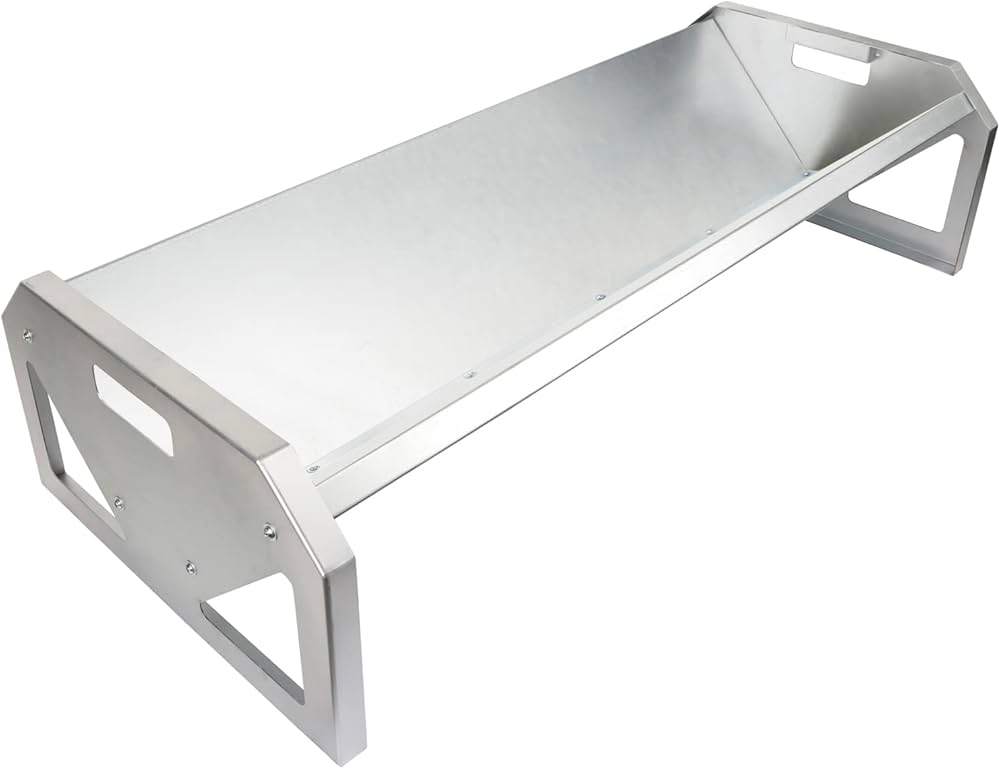
Credit: www.amazon.com
Best Practices For Using Sheep And Goat Feeders
Discover the best practices for using sheep and goat feeders to ensure optimal feeding for your animals. Implementing these guidelines will help improve feed efficiency and reduce wastage, resulting in healthier and happier livestock.
Sheep and Goat Feeders:
Keeping your sheep and goats well-fed is crucial to their overall health and productivity. That’s why using the right type of feeder and employing best practices is essential. We will discuss the proper placement of sheep and goat feeders, as well as provide cleaning and maintenance tips.
Additionally, we will explore methods for minimizing feed waste and contamination. Read on to discover how to optimize your sheep and goat feeding routine.
Proper Feeder Placement:
Ensuring the proper placement of your sheep and goat feeders is vital for their accessibility and convenience. Here are some key points to consider:
- Position the feeder in an area with sufficient space for multiple animals to eat comfortably.
- Place the feeder at a height that allows easy access for all animals, preventing them from climbing into the feeder.
- Avoid placing the feeder in low-lying areas prone to flooding or muddy conditions to prevent feed spoilage.
Cleaning And Maintenance Tips:
Regular cleaning and maintenance of your sheep and goat feeders are necessary to keep the feed fresh, prevent the spread of diseases, and extend the lifespan of the equipment. Follow these tips for effective cleaning and maintenance:
- Clean the feeder regularly, removing any accumulated dirt or debris. This can be done with a stiff brush or pressure washer.
- Inspect the feeder for any signs of damage, such as cracks or sharp edges, and repair or replace as needed.
- Disinfect the feeder periodically using a suitable solution to eliminate bacteria and parasites.
- Ensure the feeder is dry before refilling it to prevent mold and bacterial growth.
Minimizing Feed Waste And Contamination:
Minimizing feed waste and contamination is not only cost-effective but also crucial for the health of your animals. Consider the following practices to reduce waste and maintain feed quality:
- Use feeders designed to minimize spillage and protect against weather elements.
- Avoid overfilling the feeder to prevent animals from trampling the feed, resulting in unnecessary waste.
- Store the feed in a cool and dry area, away from pests, to maintain its freshness and prevent contamination.
- Implement a feeding schedule to ensure that animals are consuming the feed promptly, minimizing the chance of spoilage.
By following these best practices for using sheep and goat feeders, you can optimize your feeding system, promote animal health, and reduce feed waste. Remember to regularly inspect and clean the feeders to maintain their effectiveness and keep your animals happy and well-nourished.
Tips For Diy Sheep And Goat Feeder Construction
Looking to construct your own sheep and goat feeders? Check out these helpful tips to ensure a successful DIY project! Find out how to build functional and cost-effective feeders for your livestock with ease.
Sheep and goats require proper feeding to ensure their health and well-being. Constructing a DIY feeder can be a cost-effective solution that provides the necessary nutrition for your flock. Here are some handy tips to help you build a simple feeder for your sheep and goats.
Basic Materials And Tools Needed:
- Plywood: Choose a sturdy and weather-resistant plywood to build the main structure of the feeder.
- 2×4 boards: These will be used to create the frame and support the weight of the feeder.
- Hinges: Select heavy-duty hinges to ensure the durability and ease of use.
- Rope or chain: This will help secure the feeder to prevent it from tipping over.
- Nails or screws: Use these to fasten the different elements of the feeder together.
- Circular saw or handsaw: You’ll need one of these to cut the plywood and boards accurately.
- Measuring tape: Measure the dimensions precisely for a well-fitted feeder.
- Drill and screws: These tools will come in handy when assembling the feeder.
Step-By-Step Instructions For Building A Simple Feeder:
- Measure and cut the plywood: Start by measuring the desired dimensions for your feeder. Using a circular saw or handsaw, cut the plywood into a rectangular shape according to your measurements. This will serve as the base of the feeder.
- Create the frame: Cut four pieces of 2×4 boards to form the frame of the feeder. Two boards should be equal in length to the longer sides of the plywood, while the other two should match the shorter sides. Secure the frame to the plywood base using nails or screws.
- Add dividers (optional): To prevent overcrowding and promote efficient feeding, you can create dividers inside the feeder. Cut additional pieces of plywood to desired lengths and attach them vertically between the longer sides of the frame. This will create separate feeding sections.
- Attach hinges and a lid: On one of the longer sides of the frame, attach heavy-duty hinges that will allow you to open and close the feeder easily for filling and cleaning. Attach a lid to the hinges for convenient access.
- Secure the feeder: To prevent your sheep or goats from tipping over the feeder, attach a rope or chain from the frame to a stable structure, such as a fence or post. Make sure it is securely tightened.
- Test and adjust: Before placing feed inside the feeder, conduct a test to ensure stability and functionality. Make any necessary adjustments or reinforcements for a safe and secure feeder.
By following these simple steps and using the right materials and tools, you can easily construct a DIY sheep and goat feeder. This homemade solution will not only save you money but also provide a reliable and efficient feeding option for your animals.
Remember to consider the size and number of sheep or goats you have when determining the dimensions and capacity of the feeder. Happy building!
Frequently Asked Questions For Sheep And Goat Feeders
What Are The Benefits Of Using Sheep And Goat Feeders?
Using sheep and goat feeders provides multiple benefits, such as reducing feed wastage, improving hygiene, preventing overeating, and allowing for better herd management.
How Do Sheep And Goat Feeders Work?
Sheep and goat feeders are designed to provide controlled access to feed, preventing animals from wasting or contaminating their feed. They typically feature adjustable barriers or compartments that allow multiple animals to eat at the same time, promoting a more organized feeding routine.
What Types Of Sheep And Goat Feeders Are Available?
Various types of sheep and goat feeders are available, including trough feeders, bucket feeders, and hay feeders. Trough feeders are suitable for pelleted or loose feeds, while bucket feeders are ideal for small quantities of feed. Hay feeders, as the name suggests, are designed specifically for hay feeding.
How Do I Choose The Right Sheep And Goat Feeder?
When choosing a sheep and goat feeder, consider factors such as the type of feed you use, the number of animals you have, and their feeding habits. Ensure that the feeder is sturdy, easy to clean, and provides adequate space for all animals to feed comfortably.
Conclusion
Sheep and goat feeders are essential for maintaining the health and well-being of these animals. These feeders provide a convenient and efficient way to ensure that sheep and goats have access to a balanced and nutritious diet. By utilizing feeders, farmers can save time and reduce waste, as the feed is protected from elements and potential contamination.
Additionally, these feeders help to reduce the risk of overeating and the associated health issues that can arise. With a variety of options available, farmers can choose feeders that best suit their specific needs, whether it be for small-scale or large-scale operations.
By investing in high-quality feeders and implementing proper feeding practices, farmers can promote optimal growth and maximize the productivity of their flocks. So, make sure to choose the right sheep and goat feeders for your farm and provide your animals with the nourishment they need to thrive.

